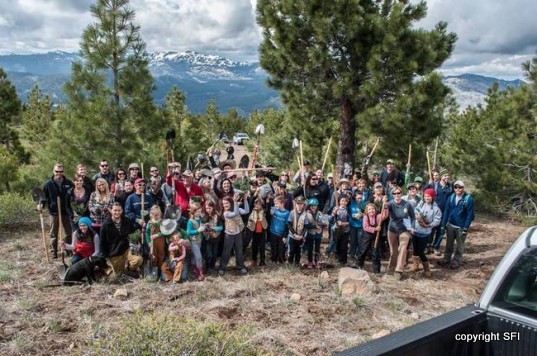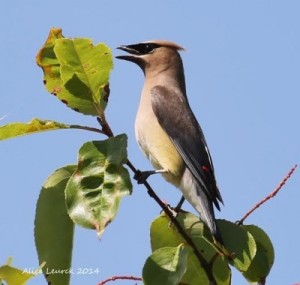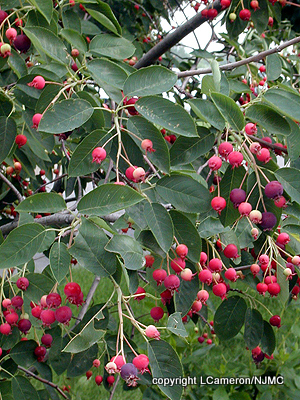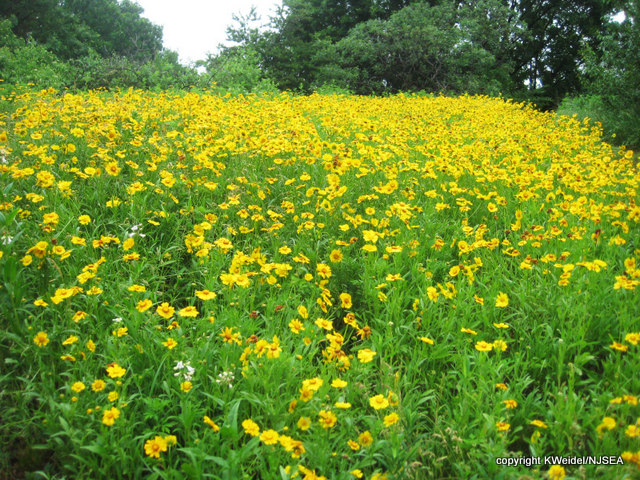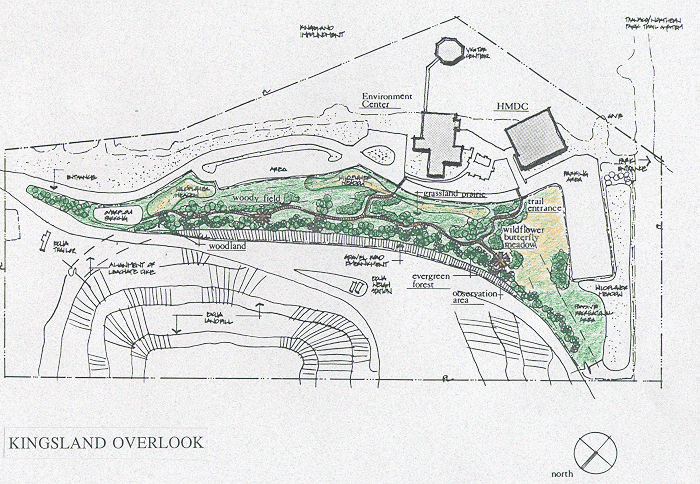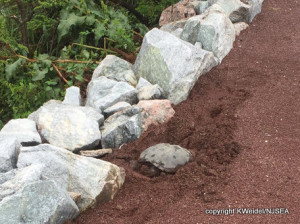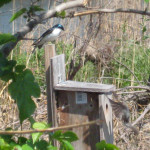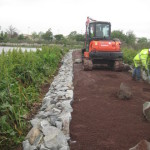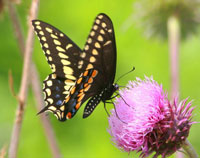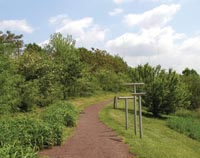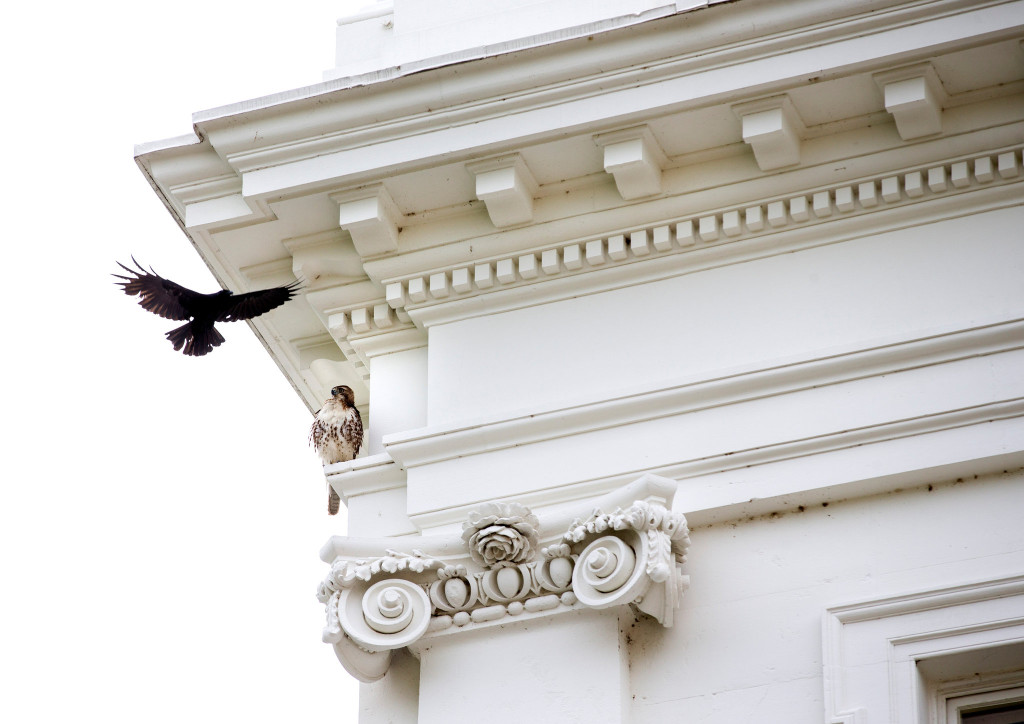
Red-tailed Hawk defends its perch above the president’s office. Photo: Doug Mills / NYTimes.
“A red-tailed hawk is prowling the lush White House lawn and perching just above the second-story window of President Obama’s East Wing residence, lured by a booming population of gray squirrels and undeterred by the harassment of smaller birds that have tried in vain to displace it.”
This from Julie Hirschfeld Davis in Monday’s New York Times. Local birders and White House visitors thrill to the sight of the hawk soaring above, then swooping down on prey on the famous lawn. The resident squirrels are surely less enthusiastic.
The White House has been a great bird-watching spot for decades. The article continues:
“In 1908, Theodore Roosevelt, an avid birder, drew up a list of the 93 bird species he had spotted around Washington while he was president, marking with asterisks those he had seen on the White House grounds. He inventoried dozens of types of sparrows, swallows and warblers he had seen around the presidential compound, as well as more exotic residents, including a pair of sparrow hawks that spent two consecutive winters there and a pair of saw-whet owls that made their home in the South Portico for several weeks in 1905.”
Read more about the White House Red-tail here.

